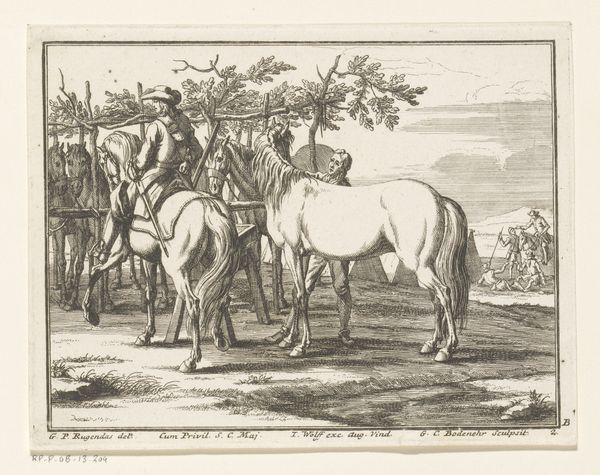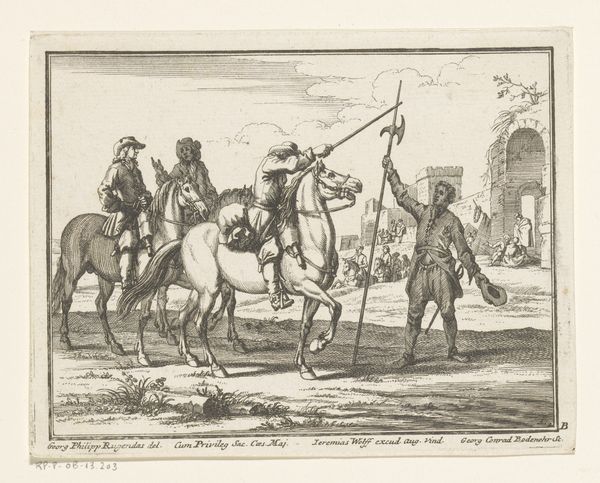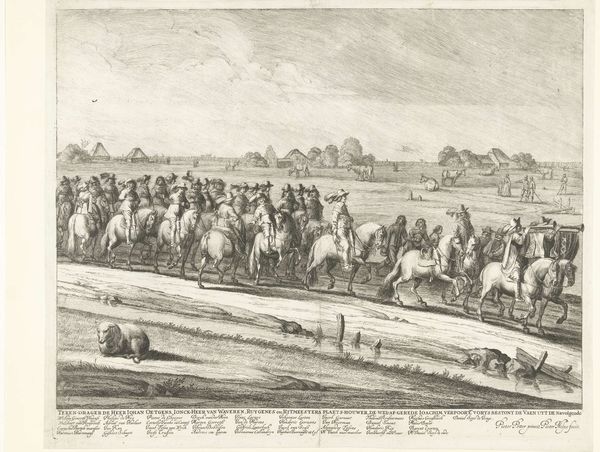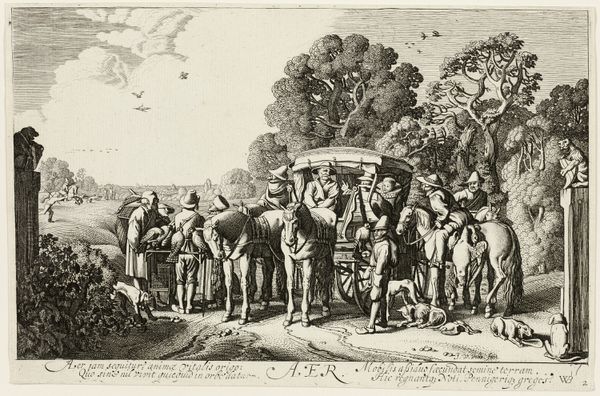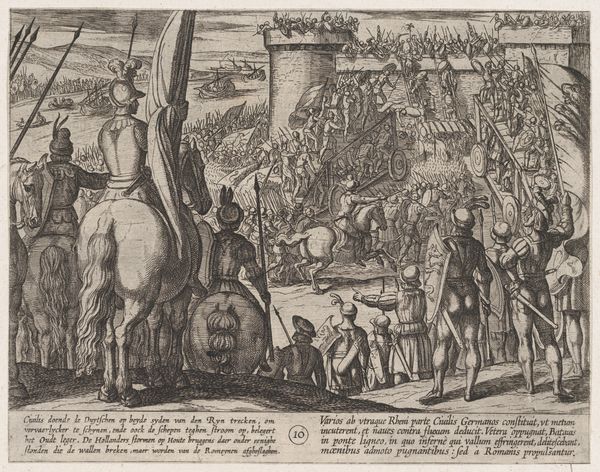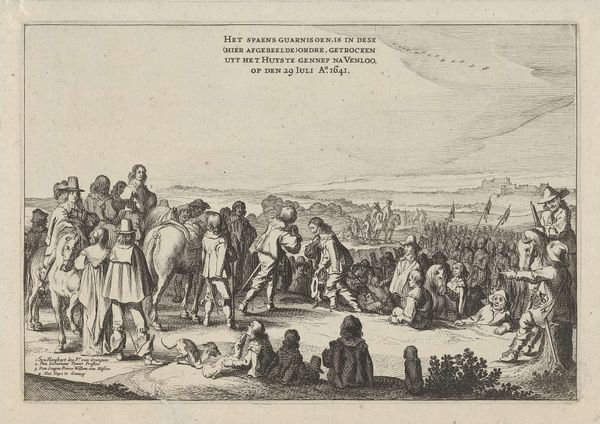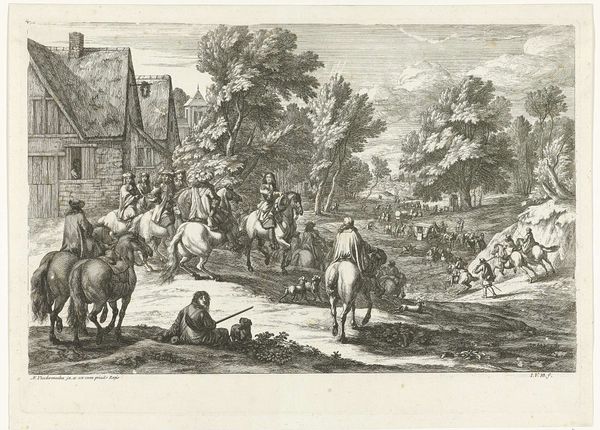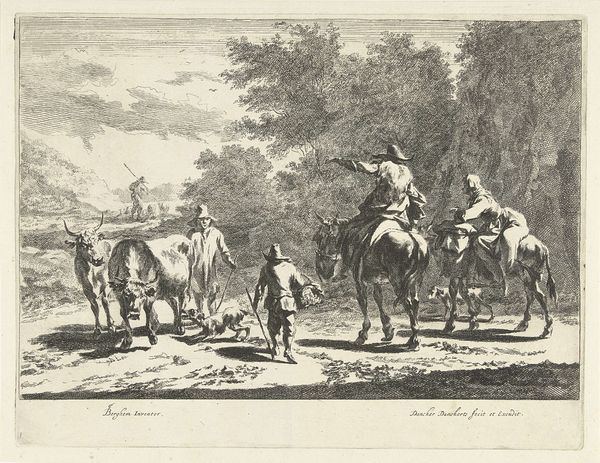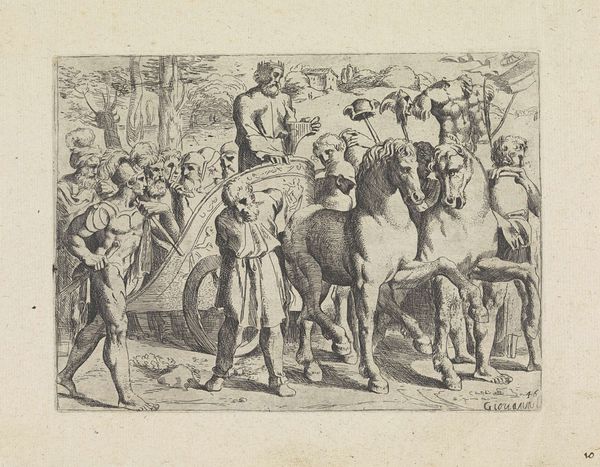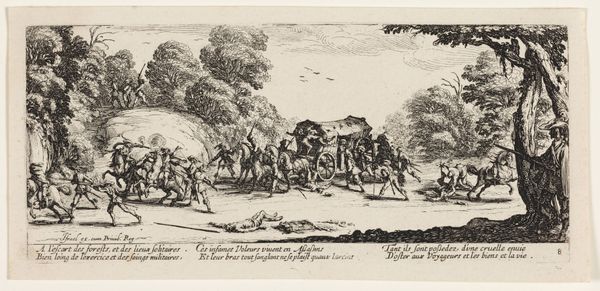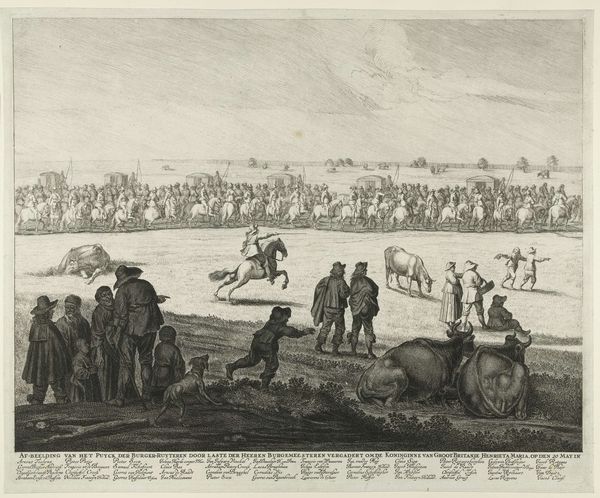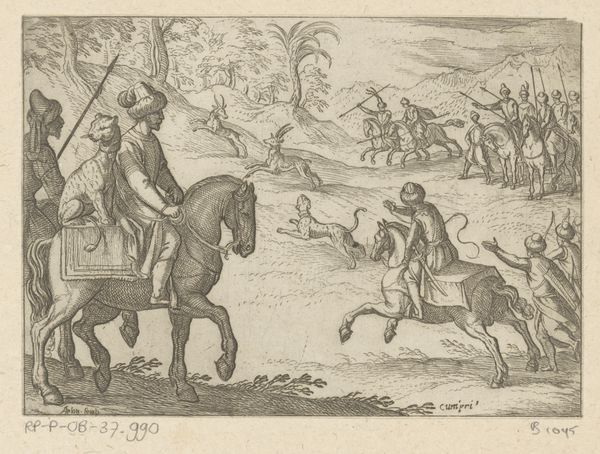
Beleg en verovering van Hulst door Frederik Hendrik (rechterhelft van de uittocht van het garnizoen), 1645 1646
0:00
0:00
print, engraving
#
dutch-golden-age
# print
#
pen sketch
#
pencil sketch
#
pen-ink sketch
#
line
#
pen work
#
cityscape
#
history-painting
#
engraving
Dimensions: height 174 mm, width 518 mm
Copyright: Rijks Museum: Open Domain
Editor: This engraving, made in 1646, depicts the "Siege and Conquest of Hulst by Frederik Hendrik," offering the right half of the garrison's departure. It looks like a very detailed snapshot of 17th-century military life. What do you see in this piece? Curator: Immediately, I’m drawn to the visual language of power embedded within. Note how the artist meticulously renders each figure, each horse, differentiating them through costume, posture. The cityscape itself seems to act as a backdrop against which military power manifests. Can you feel the symbolism of control inherent to a procession leaving a conquered city? Editor: Yes, I see what you mean. The procession feels very orderly and controlled. Is that control a literal thing, or is something else at play? Curator: The artist clearly wants us to read it that way. It is more than just control; think about the implications of visual dominance, a deliberate act to communicate power and solidify the victor’s image. Consider too, how landscape acts as witness. How does the depiction of Hulst, as a taken prize, imprint itself onto collective memory? Editor: So, it's about the symbolic victory just as much as the real one. The artist’s choices amplify that message. Curator: Precisely. It reminds me of the long tradition of war iconography designed to immortalize the leaders and create heroes, shaping lasting cultural and psychological impacts beyond the historical moment itself. It serves as more than a record; it’s a statement. Editor: That’s fascinating! I never thought about how an image could become such a potent cultural and political statement. It is definitely more complex than it seems at first glance.
Comments
No comments
Be the first to comment and join the conversation on the ultimate creative platform.
